The Corsair Hydro X Custom Water Cooling Review, on a Ryzen 9 3950X
by Gavin Bonshor on February 5, 2020 9:00 AM ESTCorsair Hydro X Build Experience
We used the Corsair Hydro X set to best effect in our testing of the ASRock X570 Aqua. To complement the review, we decided to do a full system build featuring ASRock's AMD RX 5700 XT Taichi 8 GB graphics card and other hardware which Corsair provided. Everything bar the motherboard and the AMD Ryzen 3950X processor for this build was provided by Corsair. The full system specifications and test setup are located on the next page, although the full performance of power delivery thermals combined with Corsair's Hydro X parts can be found in our ASRock X570 Aqua review. As the ASRock X570 Aqua comes fitted with its own custom water block which cools the CPU, the power delivery on the motherboard, and the chipset, we didn't use any of Corsair's water blocks for this system.
The Corsair Hydro X Aqua System: All the AMD
Since we aren't using any of Corsair's CPU or GPU blocks for this system, all of the focus is on the core components themselves including the XD5 pump and reservoir combination, a single XR7 240 mm radiator, as well as Corsair's LL120 RGB 120 mm cooling fans and it's Softline range. We did intend to use an additional 360 mm cooling radiator, but the Corsair Crystal 680X with our hardware wasn't compatible due to the ASRock X570 Aqua's larger than normal E-ATX size.
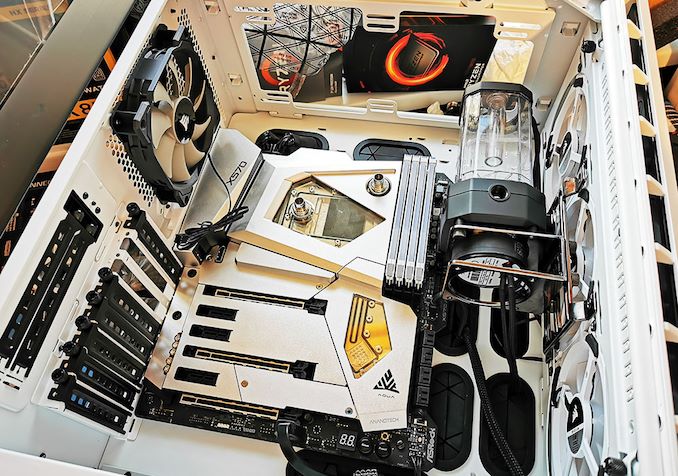
Testing possible hardware configurations inside the Corsair Crystal 680X
The first task before even unboxing the hardware was to work out which way it was going to be configured and routed around the Corsair Crystal 680X chassis. As our motherboard is E-ATX and this is technically for ATX motherboards, we did experience a couple of headaches. This wasn't to the detriment of Corsair, but more our hardware was just too big to fit in. As a result, we decided to go with a single 240 mm radiator to cool the CPU, power delivery, and chipset which the ASRock X570 Aqua block covers.
The Corsair Hydro X Series XD5 comes with mounting brackets to allow installation into various parts of a system. We decided to opt for the safer option and mount it to one of the 120 mm intake fans on the front. This was primarily to allow us to show off the XD5 in the front of the chassis, instead of mounting it in the rear chamber. The XD5 itself looks good with its nylon clear chamber, and the mounting kit is solid and sturdy.
Due to space constraints, we mounted a 240 mm radiator in a pull configuration which intakes air from the bottom of the chassis. We are using three Corsair LL120 RGB 120 mm fans in the front, with two on the radiator, and one in the rear as an exhaust. Each fan is connected to the Corsair Commander Pro controller which allows us to control everything from the Corsair iCUE software.
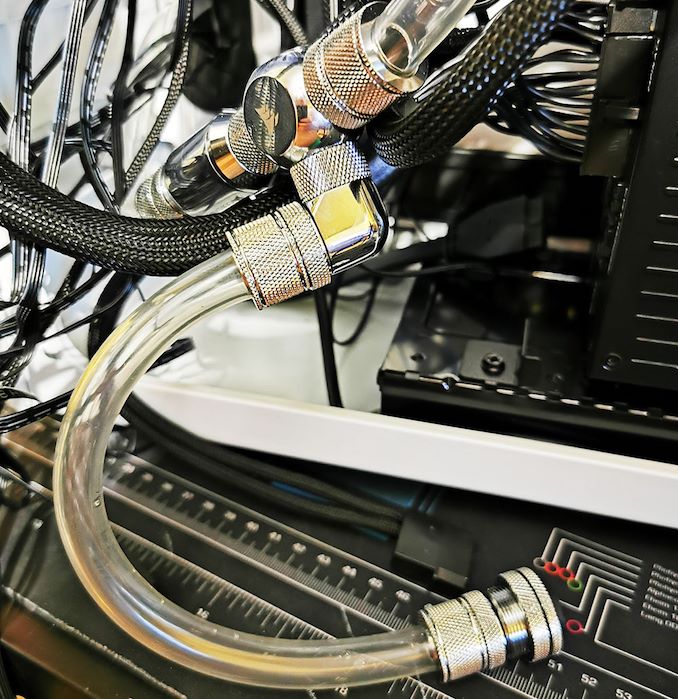
Drain port installation, should the worst happen
For better aesthetics, we routed one of the tubes through the rear chamber of the chassis, but this also allowed us to create less obstruction in the main chamber without needing to run tubing everywhere across components. For easy draining, we connected a ball valve which we can close for draining, and installed a drain port with plenty of tubing to drain without needing to dismantle the loop. This sits in the rear chamber at the bottom and is tucked away in front of the Corsair HX850 850 watt 80PLUS Platinum power supply.
After hours of countless routing and optimization of the tubing and layout, our system was complete. One thing about the Corsair Hydro X series is that it looks good, and is user-friendly making custom loop water cooling more accessible to consumers than ever before. What makes it more accessible is Corsair's Custom Cooling Configurator allows users to put in their hardware into the configurator and allow Corsair to work out what water cooling components are needed for whatever array of components are being used, or plan to be used. The Corsair Cooling Configurator is easy to use, intuitive and looks modern. This is something Corsair has put many months into designing for the end-user to make its buying decisions easy.
With the addition of the Corsair Commander RGB hub, we could connect all of the Corsair Hydro X series components including the fans and XD5 pump and reservoir combo up and sync everything up to the Corsair iCUE software; this includes the Corsair Vengeance Pro RGB memory. At present only ASUS hardware is certified to be used with Corsair iCUE in an exclusive partnership we learned about during CES 2020. As we are using ASRock hardware, we had to sync them up individually, but we like the contrasting look and having the ability to add effects.


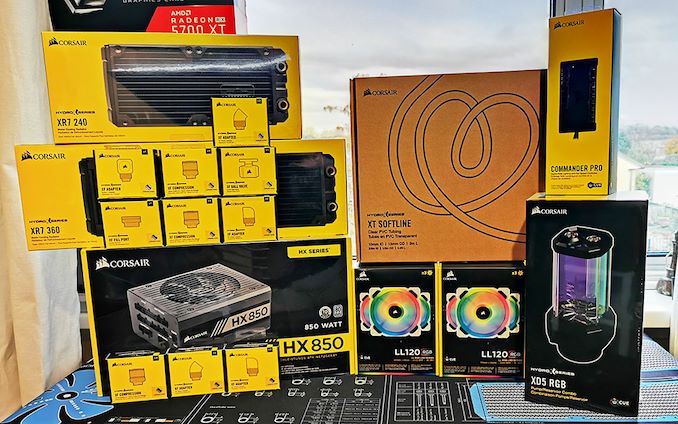

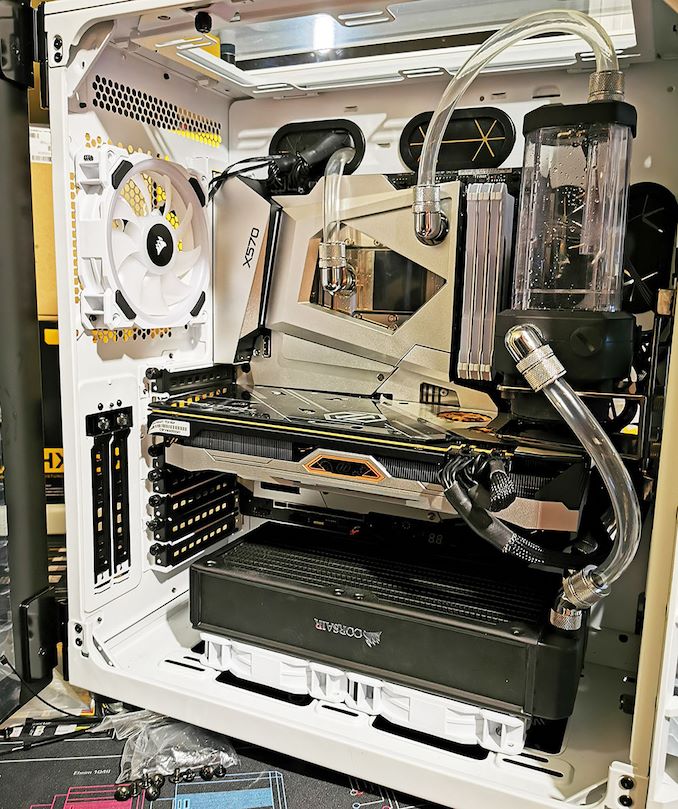
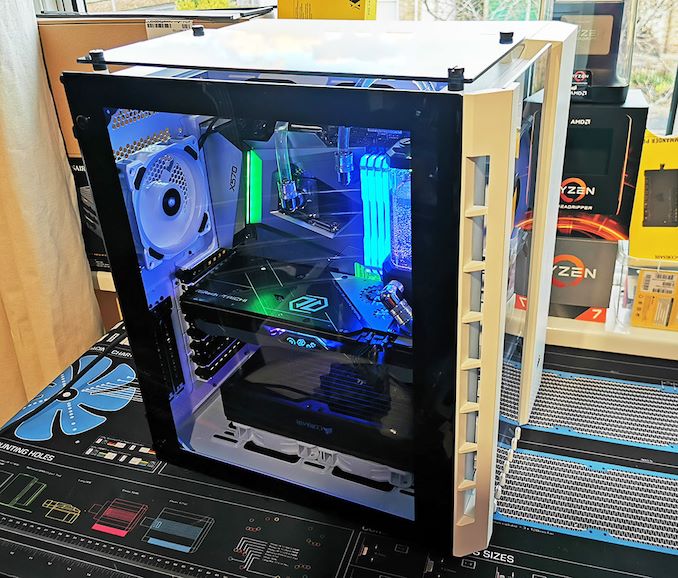
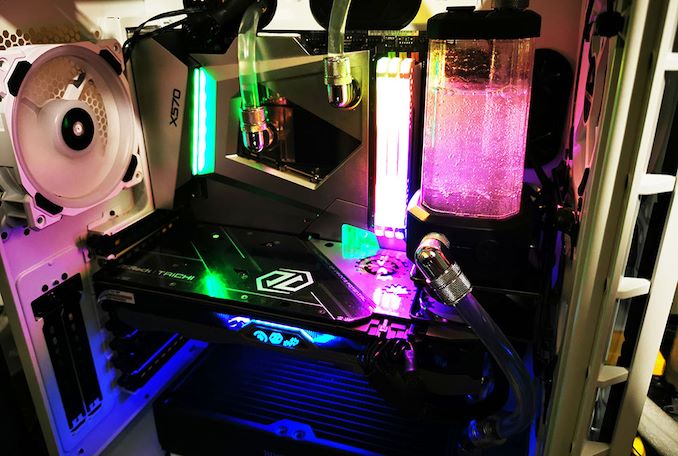








72 Comments
View All Comments
Gonemad - Wednesday, February 5, 2020 - link
"I'm one of the uncommon ones that just wants it to work, without lights."You are my hero.
But I didn't take the jump, yet. I would settle with big Noctua fans and heatsinks or whatever the best air setups can provide... considering I live in a country where 95F ambient is commonly known as "a nippy summer" and 59F is known as "dead frozen winter".
Yeah, I'm not after overclocking, just avoid thermal throttling is a win already.
surt - Wednesday, February 5, 2020 - link
Would love to know more about your setup. I just want silence and would prefer my components be invisible (zero bling).DanNeely - Wednesday, February 5, 2020 - link
The main reason my current system is watercooled and the GPU in my next one definitely will be is lower fan noise. 120/140x25mm fans on a radiator are far quieter than 70/80x10mm fans on the GPU.Assuming I do a custom loop for the GPU cooler again (I've seen AIO water cooler to GPU adapters, but never looked into them) I'll probably do the CPU too just for completeness, even if I don't go with a zillion core count model that's hot enough to make it mandatory. (Depends what the market looks like in mid 2022.)
PeachNCream - Thursday, February 6, 2020 - link
The argument for bigger, slower, and quieter fans at the radiator to reduce noise is a good one to be sure. There is really nothing quite like going from a totally passive, silent system to one that is packed with whirring fans. I'm not so sure its worth the cost of components in this specific build example which is mainly my point of criticism as there are lower cost options that reach the same goal, but I do agree that silence is certainly has value.AshlayW - Thursday, February 6, 2020 - link
It's called a hobby, hon. This site is also for PC hobbiests who enjoy this sort of thing.Protip: Untangle your jimmies.
PeachNCream - Thursday, February 6, 2020 - link
Protip: Refer to yourself to your own protip.Dug - Wednesday, February 5, 2020 - link
I get why some people may want to overclock with watercooling, but at the end of the day it's way too much work, too many chances for leak, more maintenance, very expensive, heavy, and if you hate pump noise, then air cooling works really well without the hassle. Especially if you have the right case.TEAMSWITCHER - Wednesday, February 5, 2020 - link
Is overclocking the CPU even worth while anymore? I am a Blender User and CUDA support for Nvidia GPU rendering has really changed my life. My RTX 2080 can render so much faster and unlike CPU rendering the fans barely get any louder. Renderings complete in about one third the time compared to my 9900K. My gaming is at 4K now also, so there is no CPU bottleneck that needs alleviating. At a time when everyone is water-cooling, I'm thinking that it's unnecessary, I'm going back to air cooling.Slash3 - Wednesday, February 5, 2020 - link
Any specific reasoning for the use of such old AGESA/BIOS versions? Your testbed lists them as having the ABBA release, which predates, and is not recommended for use by AMD on, the 3950X.The current releases are 2.10 for the Creator (January 22nd) and P1.70 for the Aqua (December 12th).
HideOut - Wednesday, February 5, 2020 - link
You list a 3950x as the CPU but are linking to a 3700x. I assume the 3950 is what was used, but if you got the hookup on a $329 3950 please share the deets with us :D